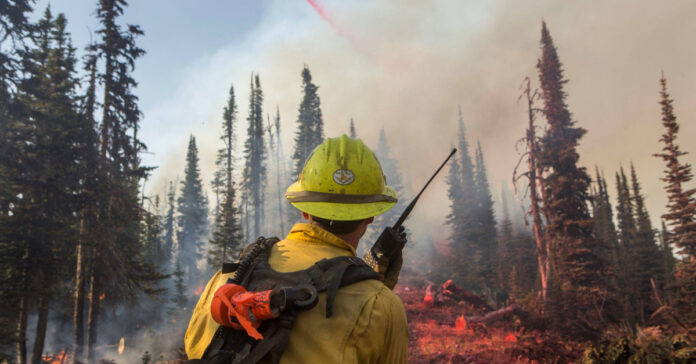Wildfires in the United States have become more catastrophic and expensive in recent years, with the U.S. Department of the Interior and the U.S. Forest Service nearly doubling their combined spending on wildfire management in the last decade.
According to the National Interagency Fire Center, wildfires have destroyed nearly 63,000 structures in the past five years, the majority of which were homes. With this number primed to grow as increased wildfire activity occurs in populated areas, policymakers at all levels of government are faced with decisions about how to pay for the diverse array of interventions required to deal with the threat. As a nation, we have invested significant resources towards these efforts, but do we know where the money is going and how it is being spent? The short answer is no, at least not in a straightforward way that allows policymakers to definitively say we are buying down our national risk.
While wildfire and forest resilience projects have been and continue to be awarded to communities throughout wildfire-prone states, the data reported on these efforts is scattered and disorganized across various federal and state agencies, localities, departments, boards, and offices. Further, existing reporting is not adequate to understand the status of such projects and programs and there is limited measurability on how these investments are making a difference in communities. A benefit of transparency in wildfire mitigation spending is that it allows stakeholders to better understand the risks they face — and the strategies being used to mitigate those risks — so they can thoughtfully contribute to the plan, thereby reducing duplicative efforts and maximizing resources.
The United States does not have a comprehensive data portal, for example, that allows policy- and decision-makers, communities, stakeholders, and the public at-large to easily understand how their taxpayer resources are being utilized to reduce the risk of catastrophic wildfires, protect communities and businesses, and improve outcomes as the nation learns from previous investments and as wildfire and forest resilience science evolves. Having such a tool available would greatly assist coordination across the board for the myriad stakeholders who manage wildfire risk.
As more frequent and severe fires drive up public spending, understanding the status of current programs is vital information to target and maximize additional investments in fire prone areas.
Wildfire season is getting longer and more intense, resulting in increased loss of life and damage to public health, property, infrastructure, and ecosystems. With transparent and accountable wildfire spending, the federal government can build trust with the public and ensure the best use of limited resources to reduce the main drivers of catastrophic wildfires and improve the resilience of increasingly vulnerable communities.
When individuals have a clear understanding of the risks they face from wildfires and the measures being taken to protect them, they can take steps to prepare themselves and their communities for emergencies. Similarly, policymakers can use information about spending and effectiveness to develop more informed policies and allocate resources more effectively.
Accountability and transparency of wildfire mitigation spending can help build public support for larger climate adaptation and more comprehensive resilience initiatives. By demonstrating the benefits of investing in wildfire mitigation, governments can show their constituents that acting on climate risks can have real, tangible benefits for their communities. This, in turn, can help build public support for more comprehensive climate adaptation plans that address the root causes of wildfire risks. If we want to get serious about wildfire mitigation as a nation, we must address the gaps in the accountability of our approach.
The views expressed here are the writer’s and are not necessarily endorsed by Homeland Security Today, which welcomes a broad range of viewpoints in support of securing our homeland. To submit a piece for consideration, email [email protected].





